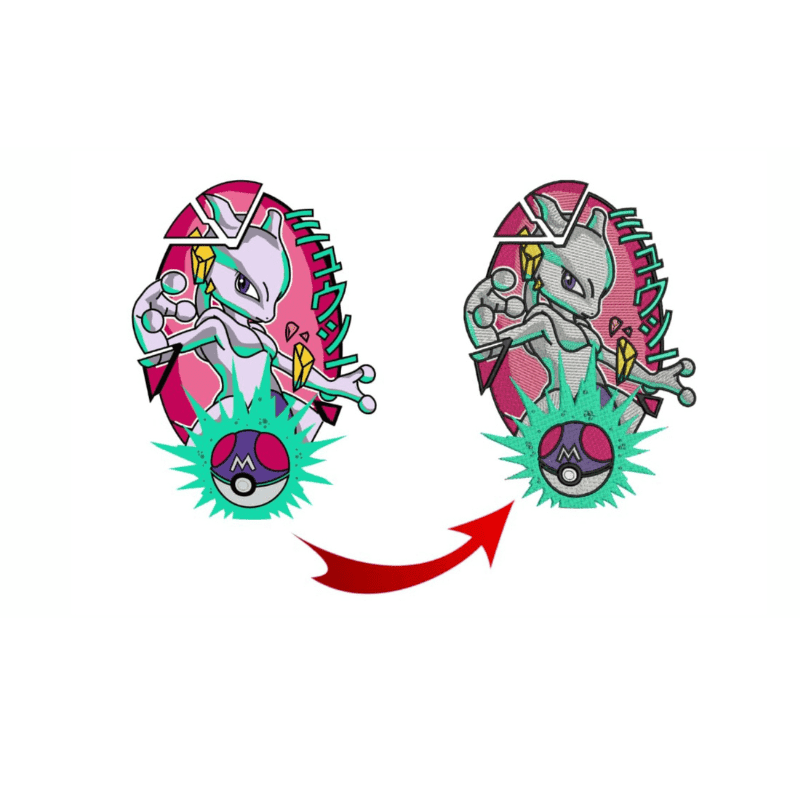Effective Digitizing for Embroidery: Quick Turn-around
Effective Digitizing for Embroidery: Quick Turn-around
Blog Article
Discover Various Kinds Of Embroidery Digitizing Techniques
Needlework digitizing has actually advanced dramatically over the years, using a myriad of methods to bring styles to life in the electronic realm. The realm extends to a lot more innovative methods like photorealistic embroidery digitizing and the interesting realm of 3D needlework digitizing.
Typical Hand Needlework Digitizing
Traditional hand embroidery digitizing entails the process of transforming detailed hand-stitched styles into digital layouts for maker needlework. This method calls for knowledgeable artisans to carefully examine the handmade style and after that use specialized software program to recreate it in an electronic style. Each stitch, color, and information must be very carefully converted to make sure that the essence of the initial hand needlework is protected in the electronic version.
One of the key difficulties of conventional hand needlework digitizing is catching the ins and outs and subtleties of the handmade layout. Digitizing for Embroidery. Craftsmens need to have a deep understanding of different needlework strategies, such as satin stitch, chain stitch, and French knots, to properly reproduce these techniques in the digital realm. In addition, they need to have an eager eye for information to guarantee that the electronic layout preserves the exact same degree of virtuosity and workmanship as the original hand-stitched item
Punching Method
To effortlessly change from conventional hand embroidery digitizing to the boxing technique, craftsmens must currently concentrate on transforming the detailed digital designs right into instructions that embroidery machines can analyze. The boxing technique entails utilizing specialized software application to produce digital documents which contain commands for the needlework device to adhere to. This process calls for a deep understanding of not just the layout itself however additionally the abilities and limitations of the needlework maker.

Auto-Digitizing Software Programs
Needlework digitizing has actually been revolutionized by the introduction of auto-digitizing software application programs, offering artisans with advanced tools to convert digital styles right into embroidery maker directions successfully. Auto-digitizing software application programs make use of algorithms to examine electronic pictures or vector data and generate embroidery layouts automatically. These programs permit for quick and exact conversion of detailed layouts right into stitch patterns, saving effort and time for embroiderers.
Among the crucial benefits of auto-digitizing software is its easy to use user interface, making it easily accessible to both novices and seasoned digitizers. These programs typically consist of features such as stitch modifying devices, thread shade matching, and the capability to preview the final embroidered design. Furthermore, auto-digitizing software can deal with complex layouts with he has a good point numerous colors and elaborate details, producing premium embroidery documents appropriate for numerous garments and fabric jobs.
While auto-digitizing software provides ease and effectiveness, it is vital for customers to comprehend the restrictions of automated digitizing. Fine-tuning and manual adjustments might still be required to attain the desired embroidery top quality, specifically when taking care of elaborate or special layouts. By leveraging the capabilities of auto-digitizing software together with manual digitizing techniques, artisans can improve their embroidery digitizing process and create magnificent stitched pieces.
Photorealistic Needlework Digitizing
Making use of innovative electronic imaging methods, accomplishing photorealistic cause embroidery digitizing has actually become a sought-after ability amongst modern artisans. This technique includes converting high-resolution pictures into detailed stitch patterns that closely mimic the original style, leading to embroidery items that exhibit lifelike information and deepness.
To achieve photorealistic embroidery digitizing, craftsmens should possess a keen eye for detail and a comprehensive understanding of exactly how different stitch types and thickness can impact the final end result. By thoroughly mapping out each color and shade in the image, embroiderers can create an electronic documents that guides the needlework machine to duplicate the nuances of the initial photo accurately.
Photorealistic embroidery digitizing is particularly preferred in developing custom designs for apparel, home design, read review and art items where recording the essence of a picture or artwork is important. This method permits craftsmens to change memories, landscapes, pictures, and complex artwork into stunning stitched masterpieces that display a mix of conventional craftsmanship and sophisticated technology.
3D Embroidery Digitizing
With the development of electronic imaging strategies in accomplishing photorealistic lead to needlework digitizing, the expedition of 'D Needlework Digitizing' supplies a brand-new measurement to the ins and outs of layout replication. 'D Embroidery Digitizing' refers to the three-dimensional digitizing method that includes depth and appearance to needlework styles, producing an extra reasonable and visually attractive last product. This strategy uses software that replicates the effect of click to find out more light and shadow on the needlework layout, improving its general aesthetic impact.
One of the essential advantages of 'D Needlework Digitizing' is its capability to make designs look more lifelike and vibrant. By adding deepness to the embroidery layout, the last product appears much more realistic and fascinating (Digitizing for Embroidery). In addition, this technique permits even more imaginative freedom in layout implementation, making it possible for embroiderers to explore different textures and results that were previously testing to accomplish
Verdict

Report this page